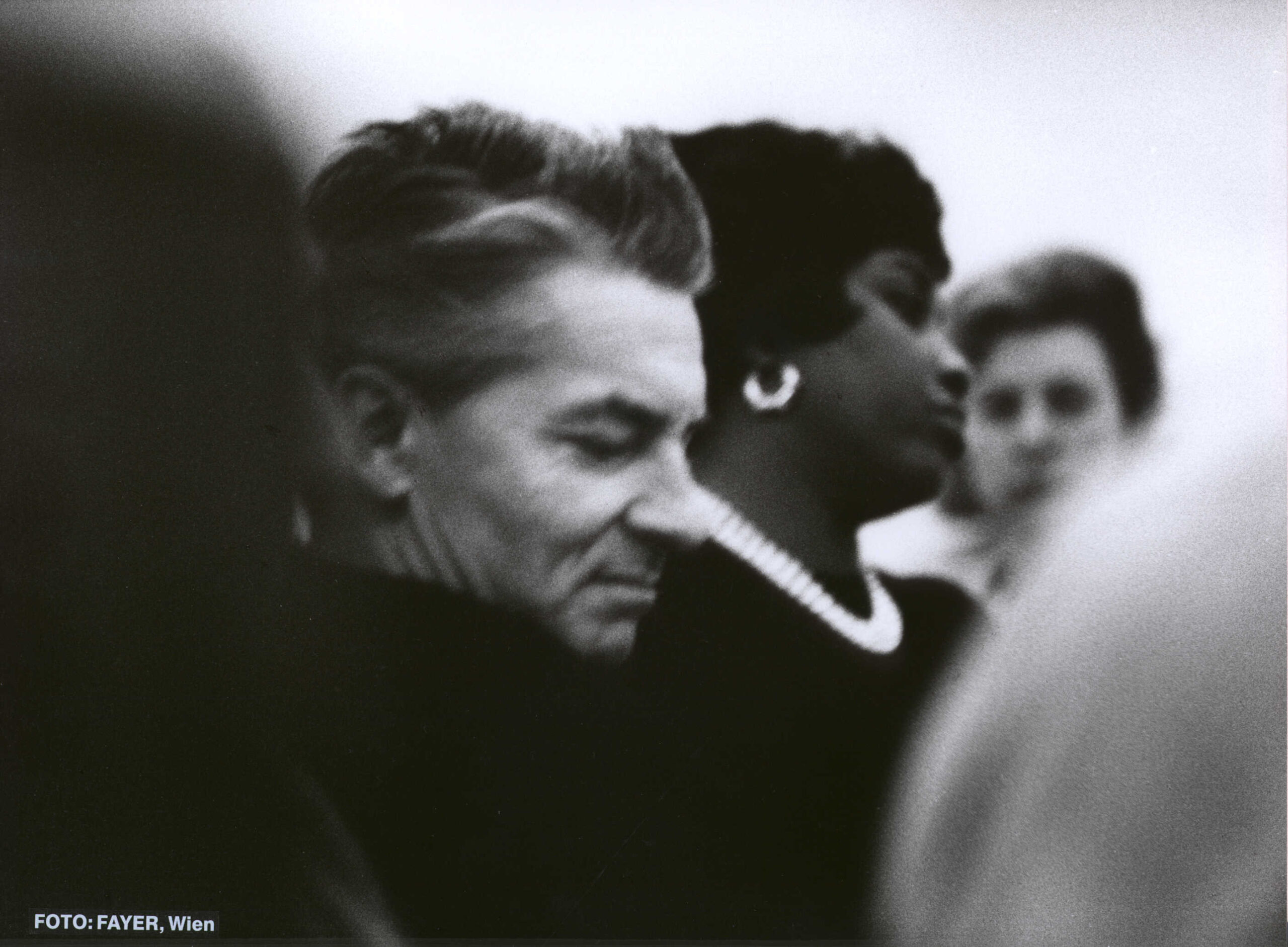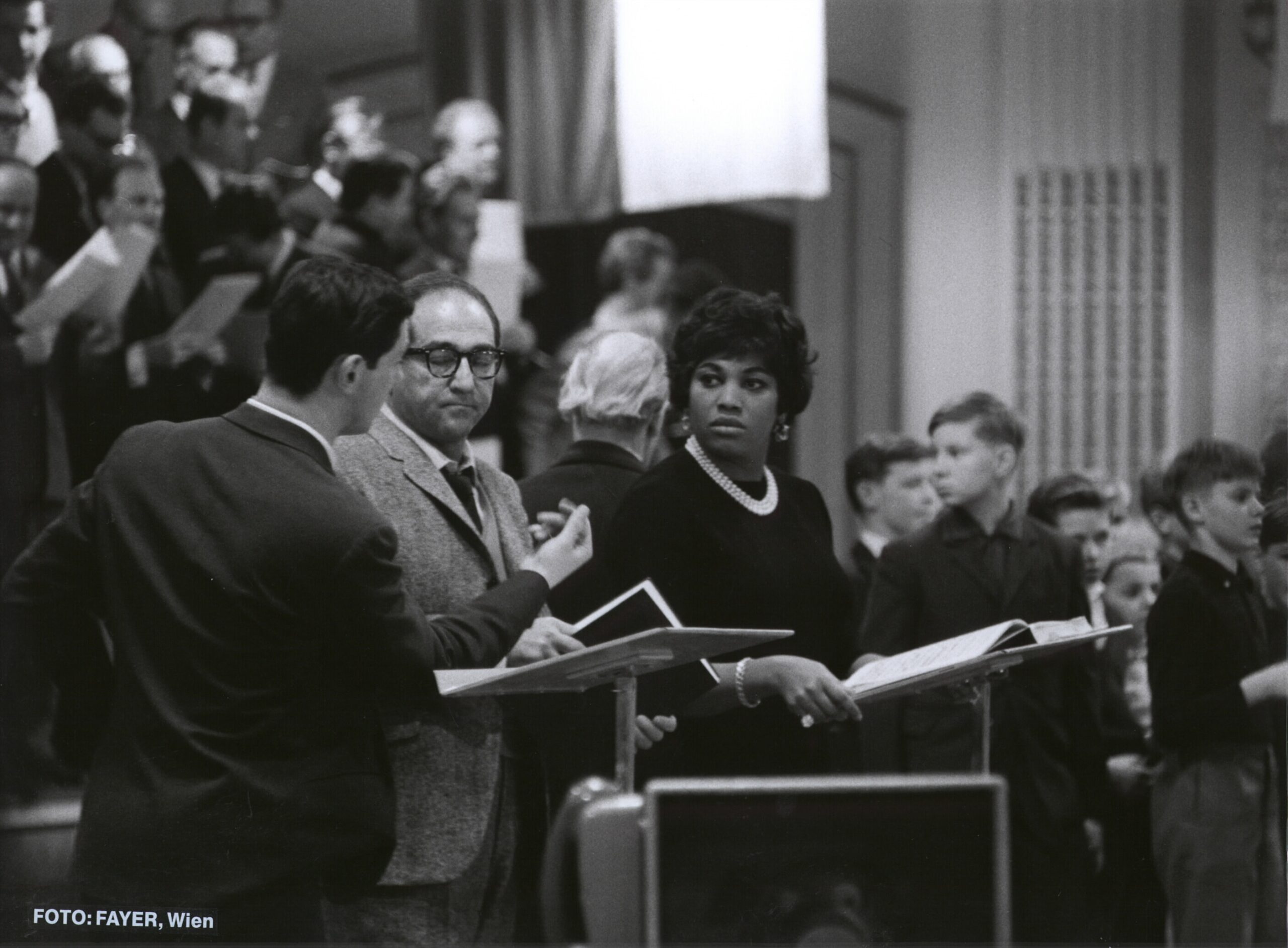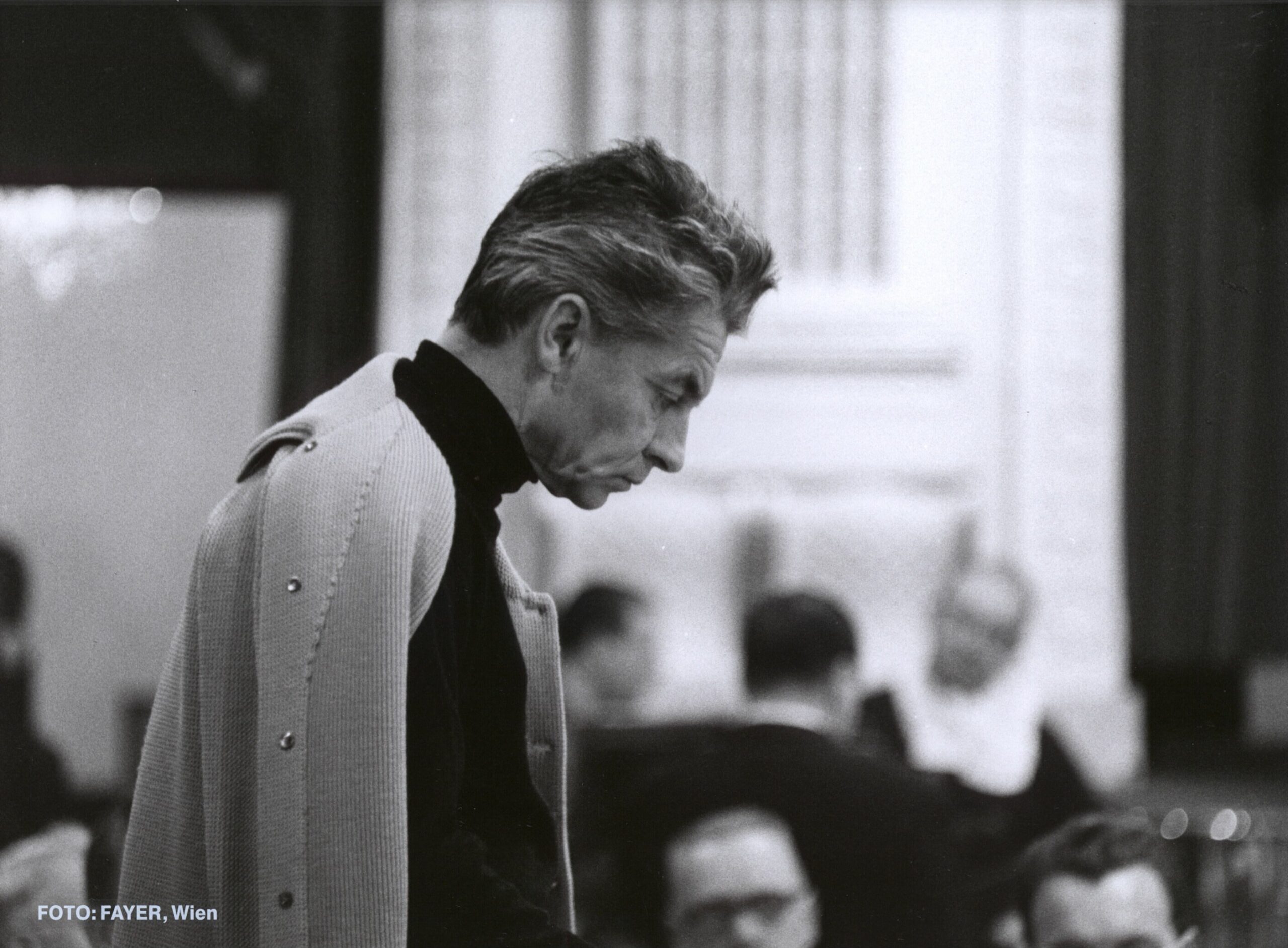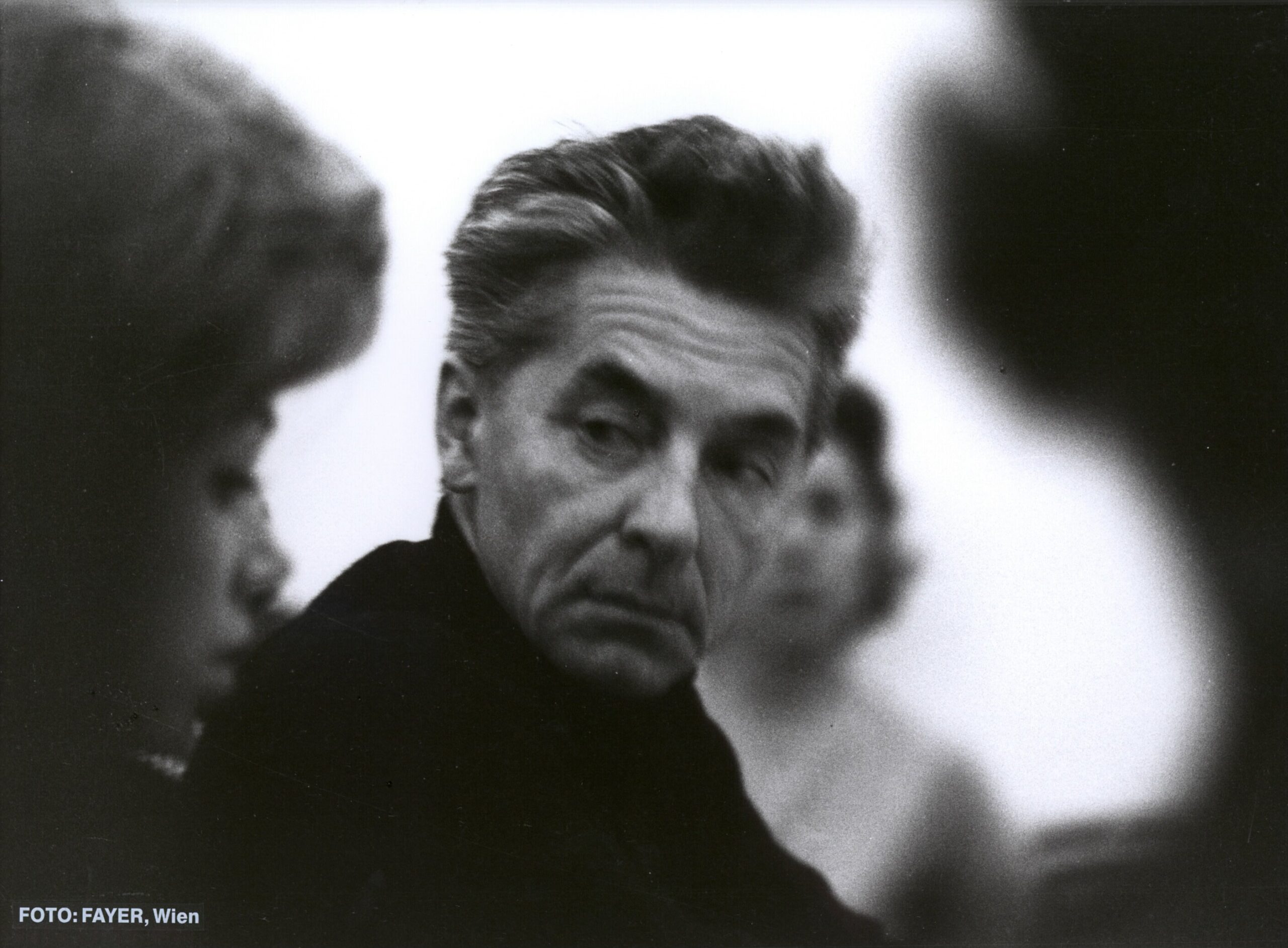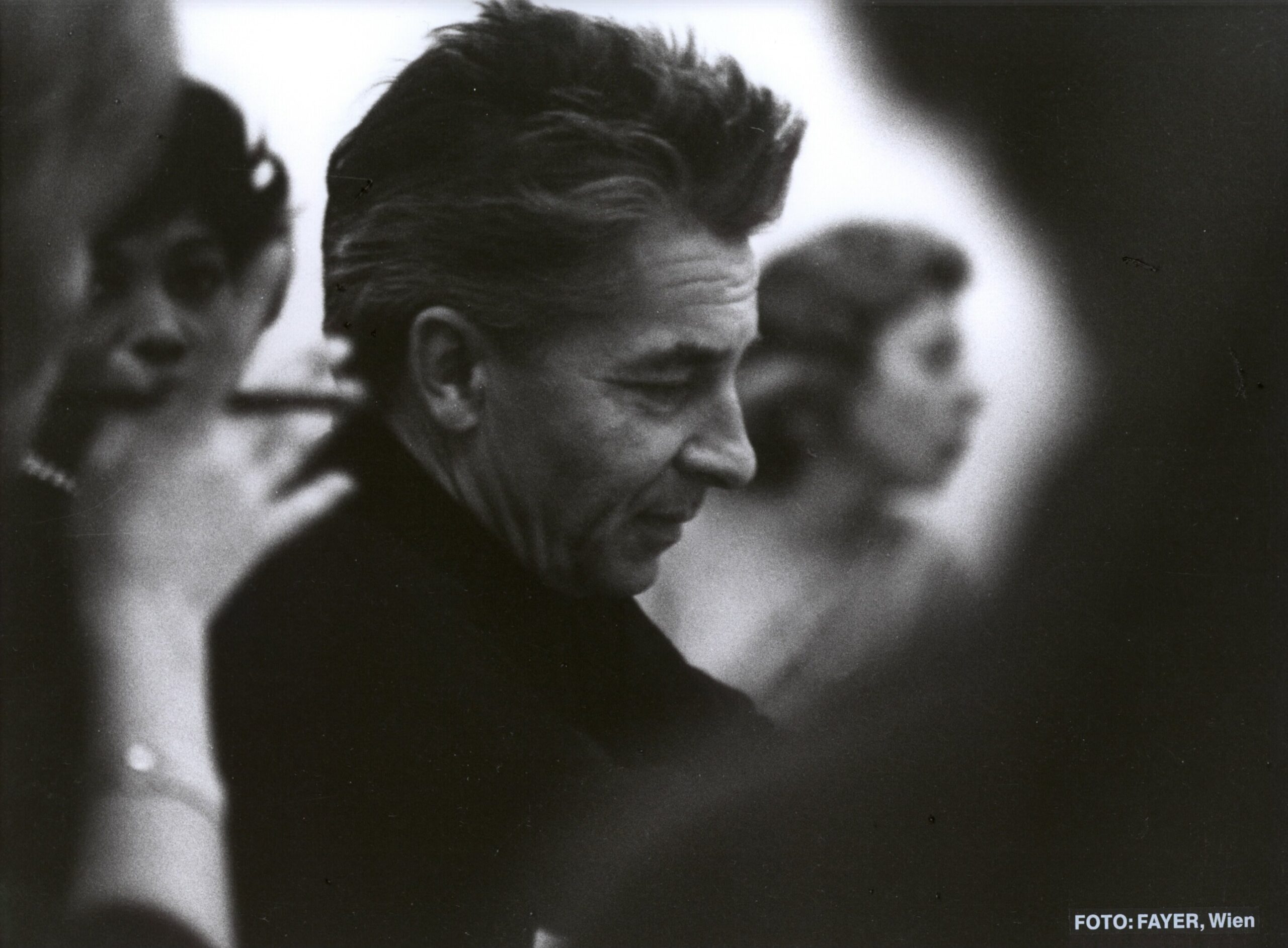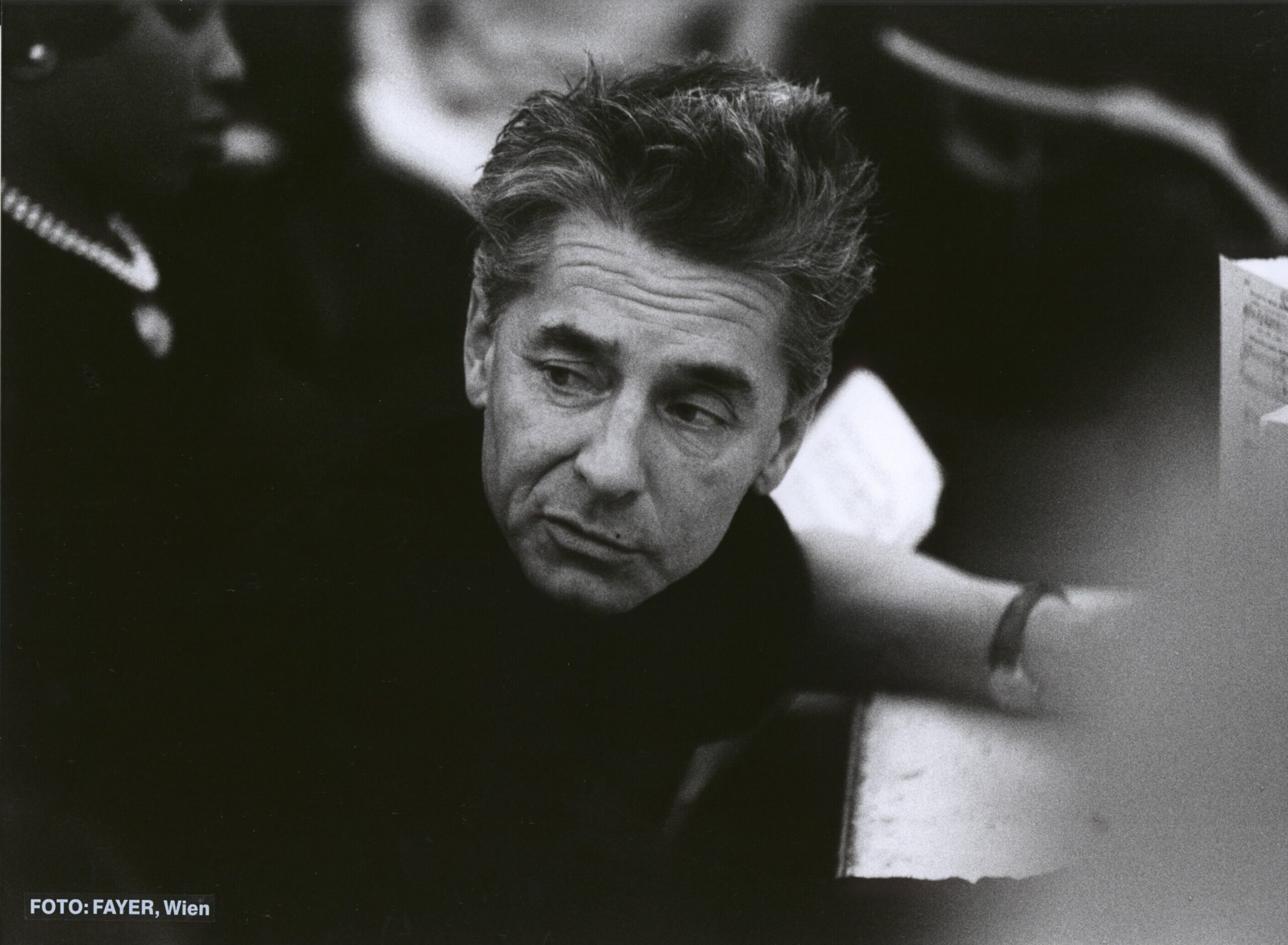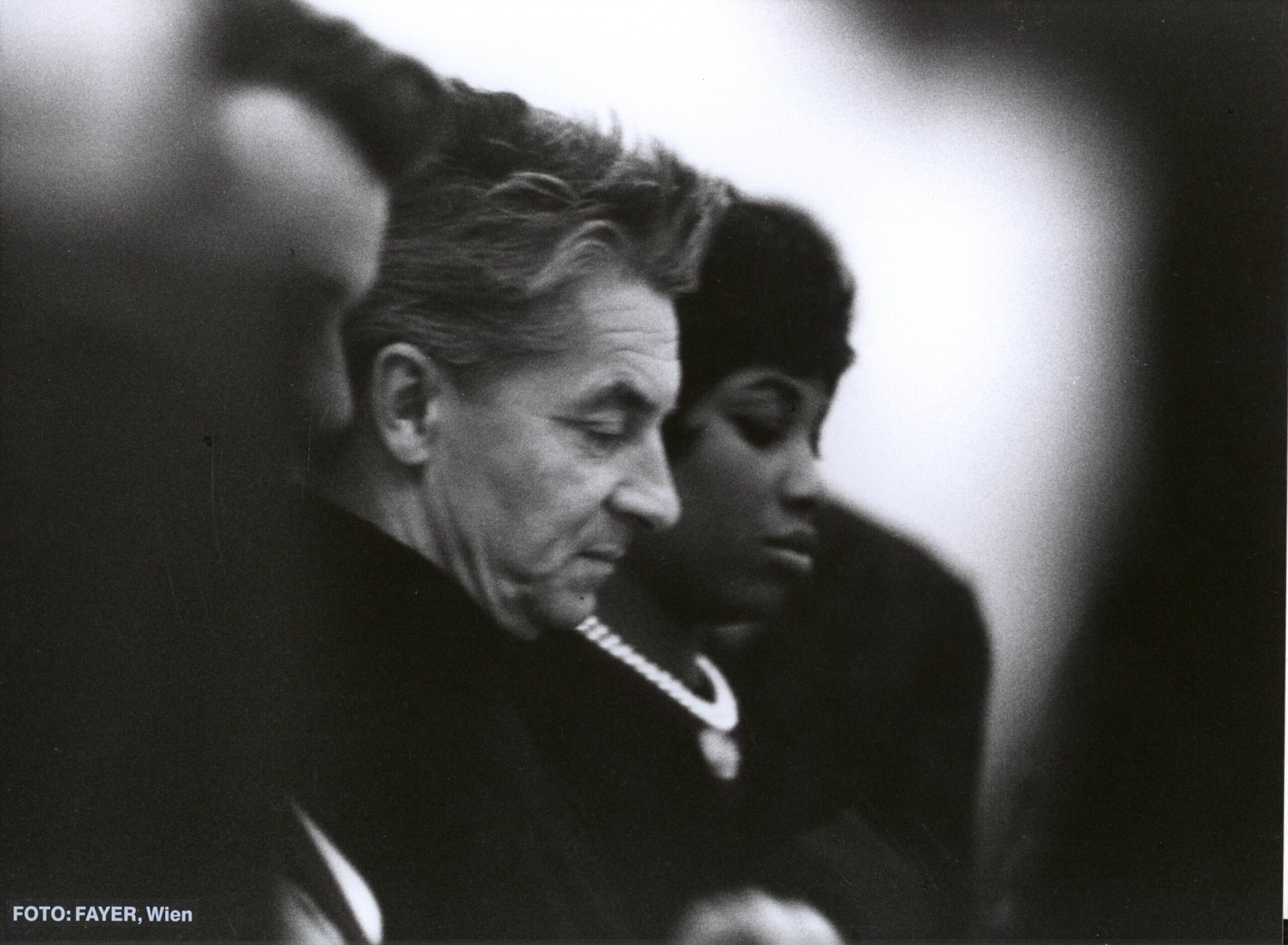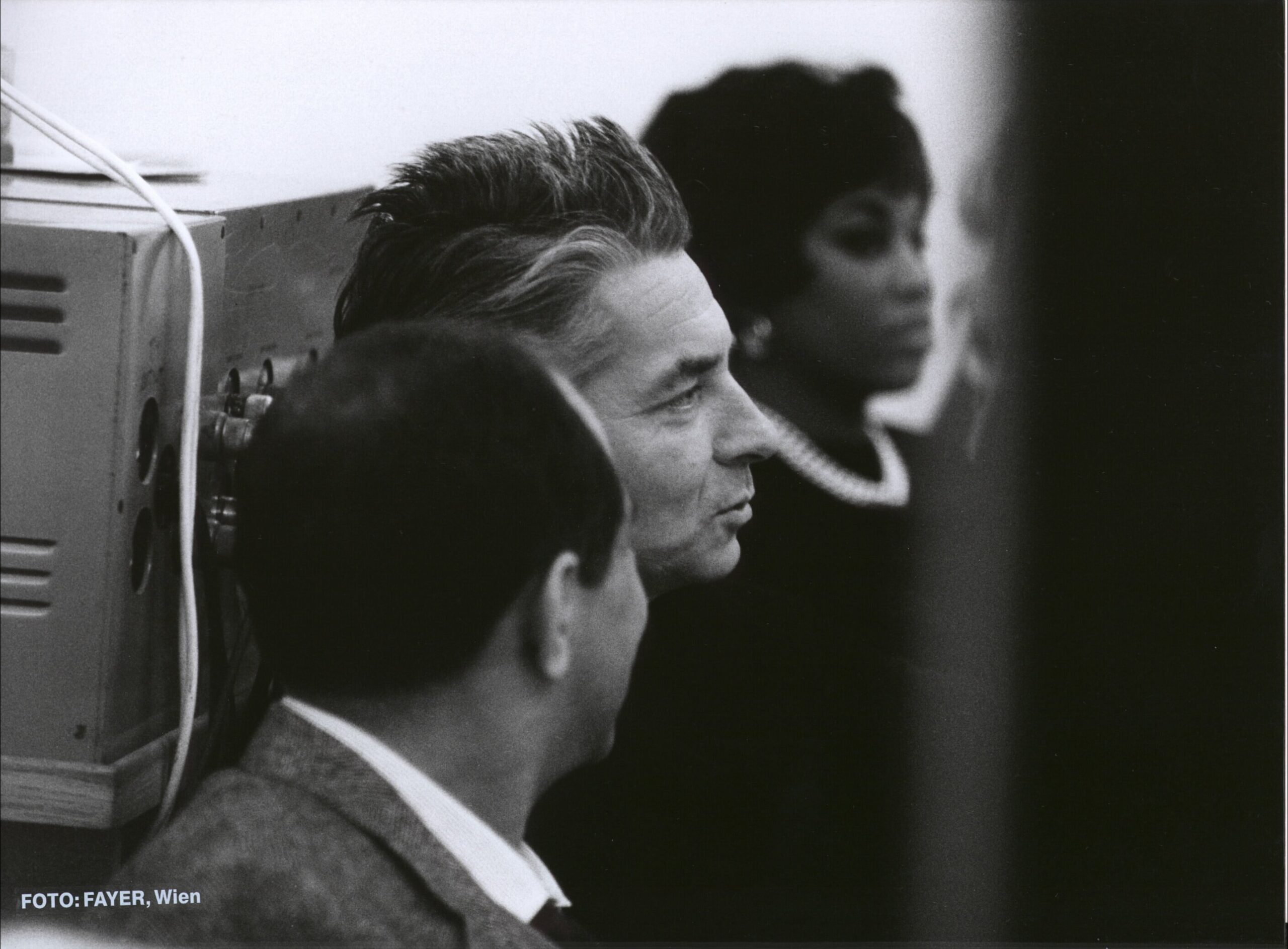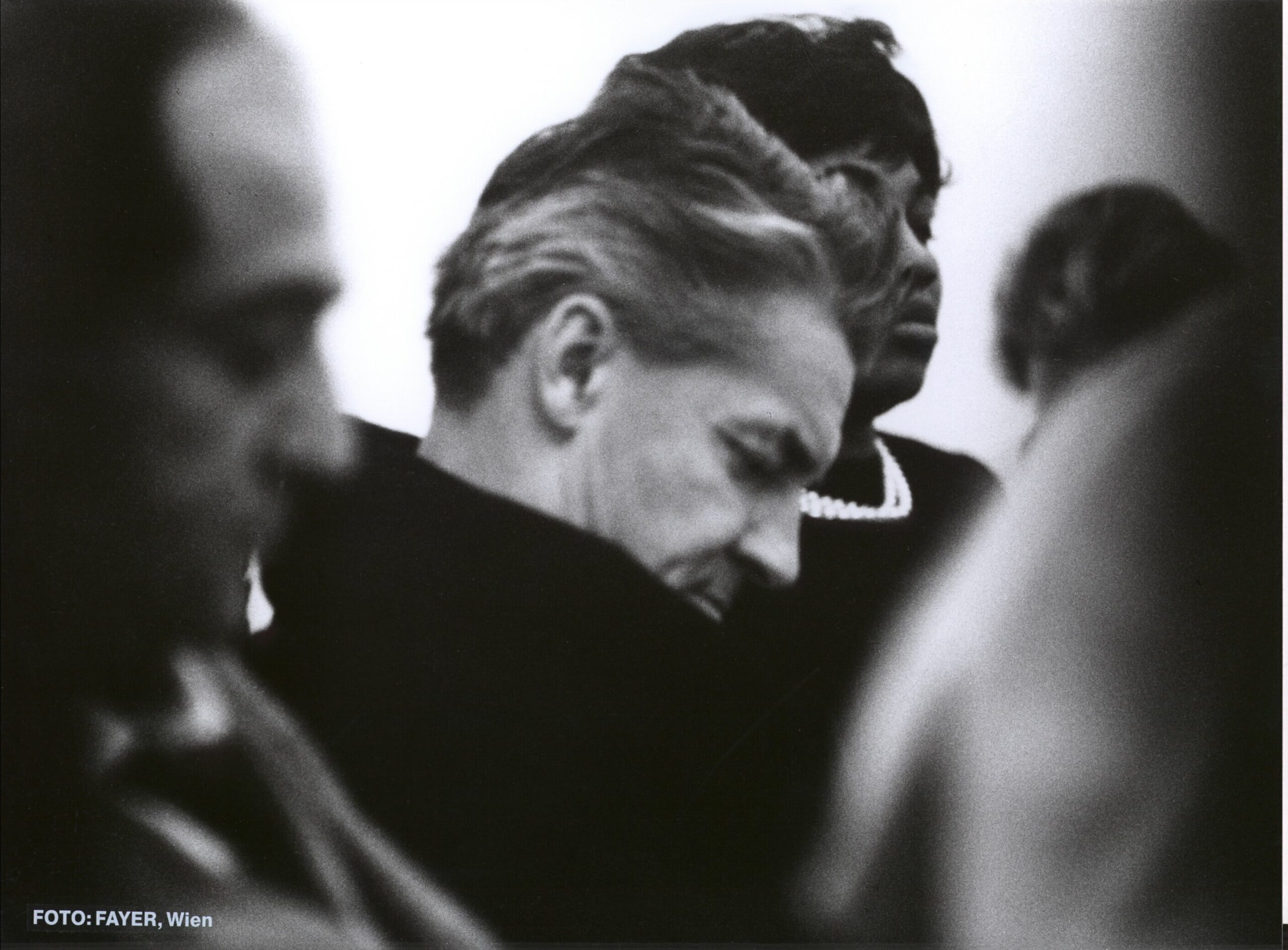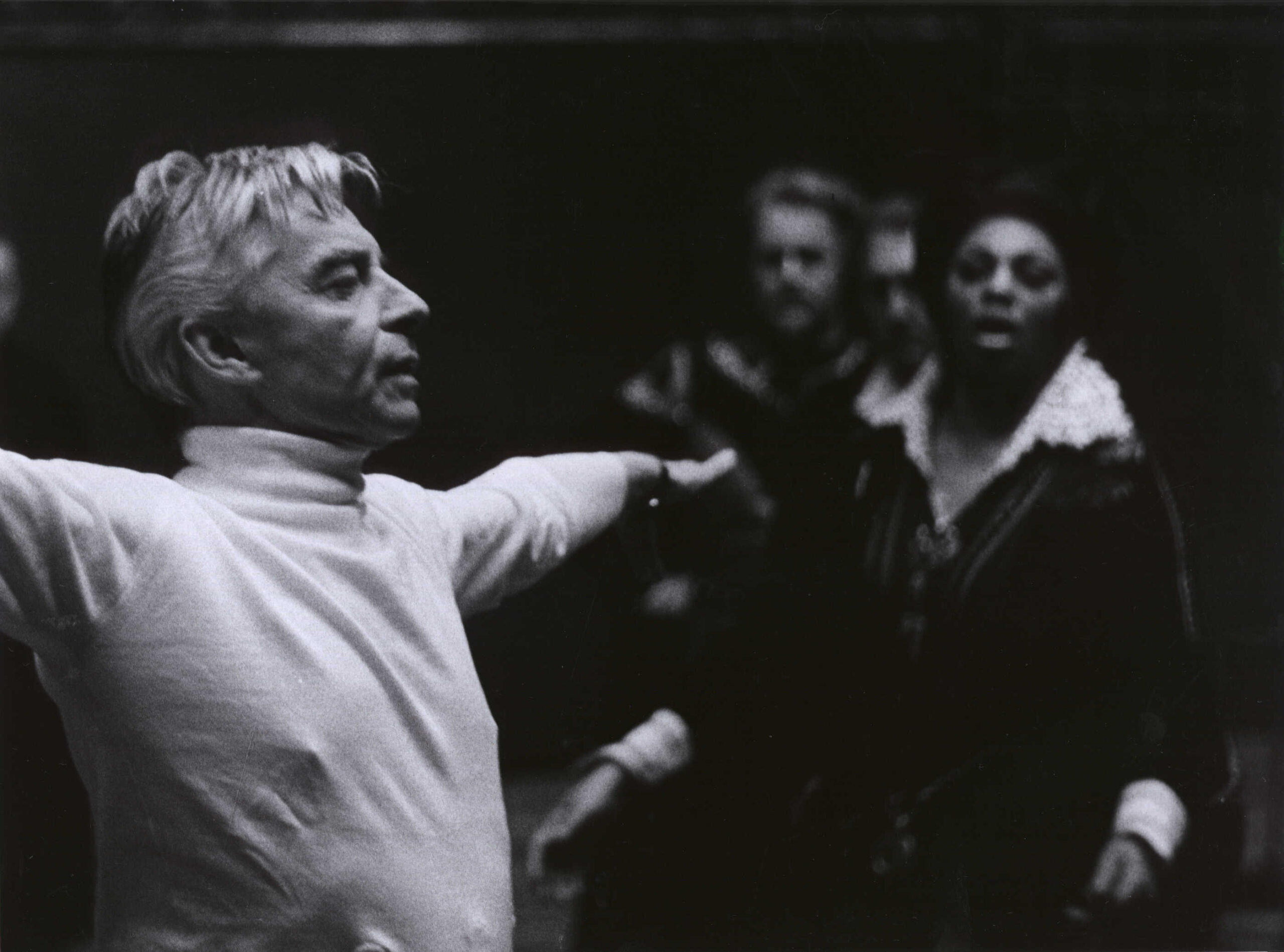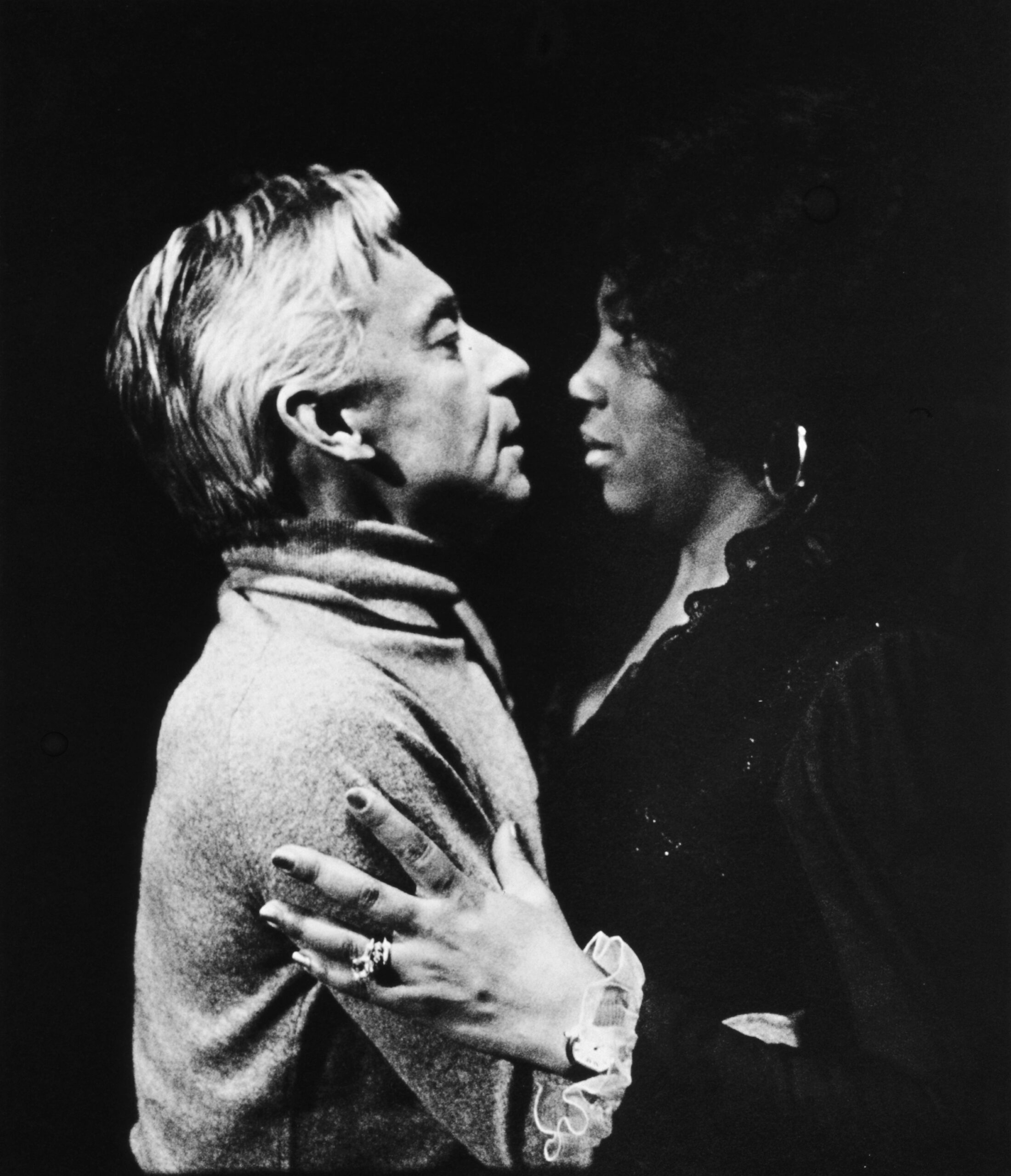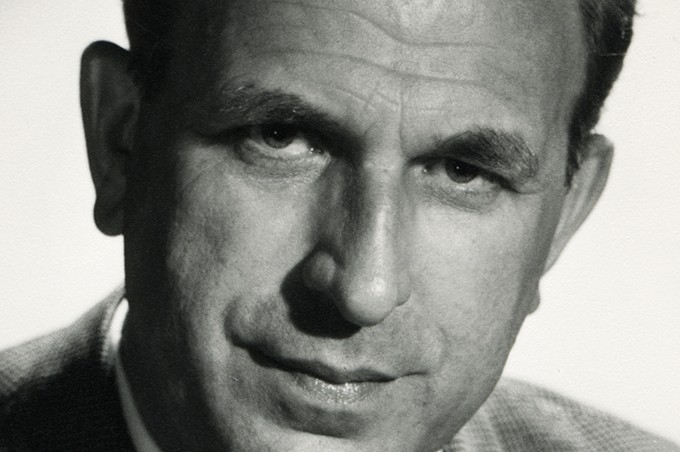25 January 2024
P.R. Jenkins
Karajan artists: Leontyne Price – the American diva
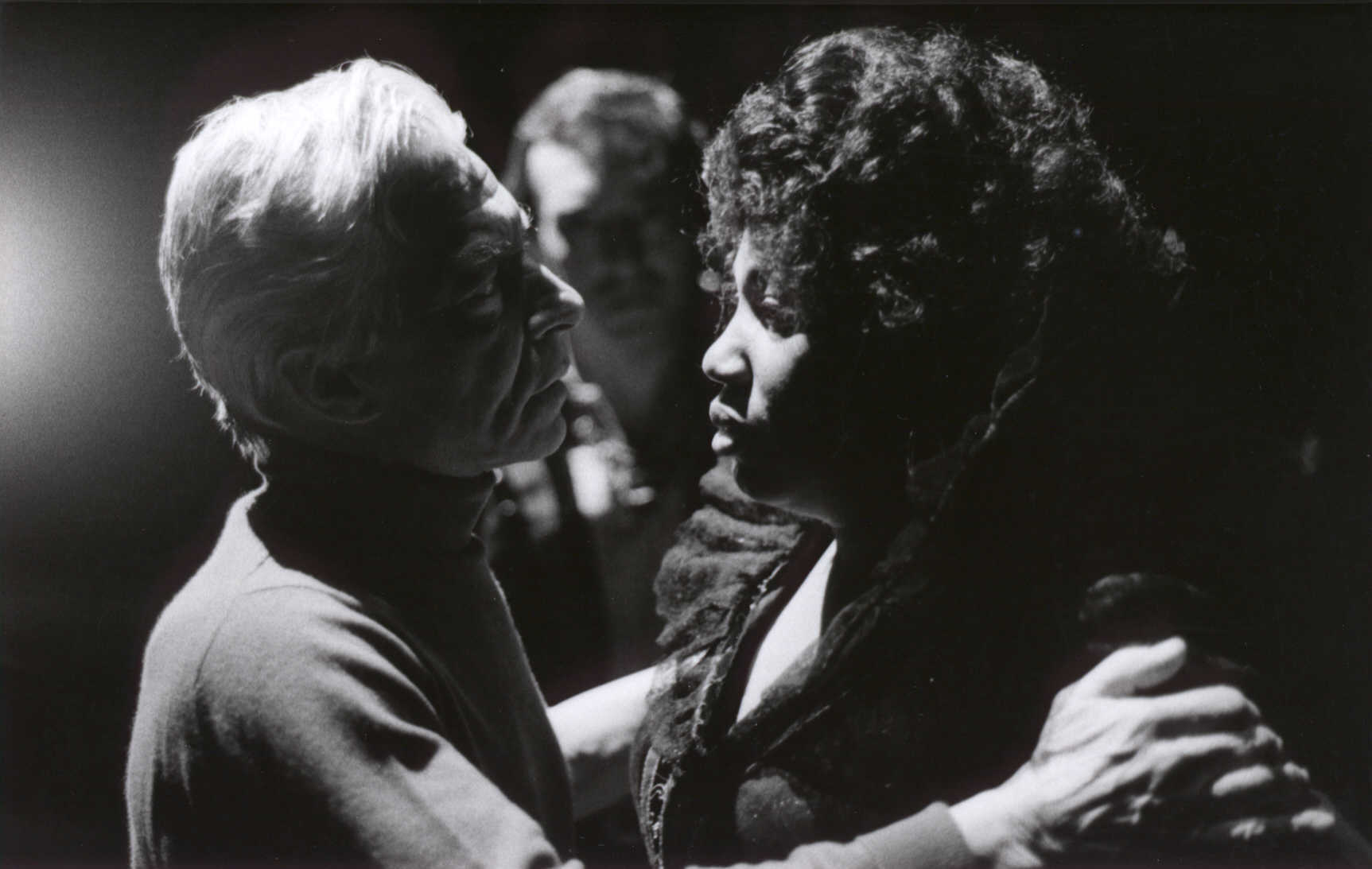
She was an indispensable voice for Karajan’s opera and concert projects in the 1950s and 1960s – Leontyne Price.
The soprano from Mississippi is one of the first Afro-American divas in classical music and is regarded as one of the finest American singers ever. Karajan met her for the first time at an audition in New York during his American tour with the Berlin Philharmonic in 1955. He accompanied her on the piano and said to her: “You are an artist of the future.” By then, Price was already successful in a touring production of “Porgy and Bess” and started to develop her classical repertoire. Three years later, she had her breakthrough in Europe, especially at Karajan’s Vienna State Opera as “Aida”, a part she also chose for her farewell performance at the Met in 1985. In a Gramophone interview in 1971, Price said:
“My major break came when I went to Europe and sang Aida at Covent Garden and the Vienna State Opera, there beginning my association with Karajan. I gained a wealth of experience and knowledge working with him that has held me in good stead ever since. Indeed I’m still doing things today that I then learned.”
Their next encounters in 1958 and 1959 were concerts with other soloists in great choral works: Beethoven’s Ninth symphony in New York (the only time Karajan conducted the New York Philharmonic), Verdi’s Requiem in Vienna and Beethoven’s Missa Solemnis in Salzburg.
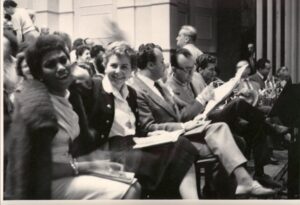
1960 was a year with many important joint events for Karajan and Price – and a lot of Mozart. He invited her to join his cast for the inauguration of the Großes Festspielhaus. The first piece performed at the theatre that was to become so important for Karajan’s opera work was the “Gloria” from Mozart’s mass in C minor. The same summer, Price appeared as Donna Anna in Karajan’s new “Don Giovanni” production. Richard Osborne wrote: “Since the producer Oscar Fritz Schuh declined to stage it in the new hall, it was consigned to the old one. […] Teo Otto’s sets and Georges Wakhevitch’s costumes cast the opera in a twilight zone of red, blacks, and golds, the background spare and jagged in the El Greco style. No wonder Karajan wanted Leontyne Price as his Donna Anna, ideally fitted, [Joseph] Wechsberg noted, to ‘the weirdly baroque night-scene’ and singing with lustre and warmth.”
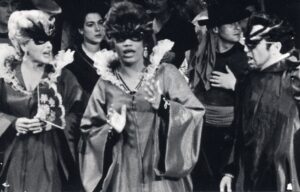
And the musicologist Hans Heinz Stuckenschmidt:
“The ensemble this year in Salzburg is hilarious in its combination … The voice of Leontyne Price is something completely new for the dramatic character of Donna Anna. […] She starts nervously, pushes her scene, pulls herself together and achieves a more and more perfect bel canto, a shining treble sound, brilliant in expression. The way she begins a melody, heightens it, phrases, impersonates her part both in arias and ensembles is the vocal sensation of the evening.”
During the “Don Giovanni” series, she also performed a concert with Mozart’s Requiem and Bruckner’s Te Deum. In 1960 and 1961, they recorded music Karajan only conducted on those occasions: Gershwin’s “Summertime” for the gala scene with star guests in the 2nd act of “Die Fledermaus” (Karajan’s only Gershwin recording!) and an album with Christmas Carols.
The next two years 1962 and 1963 were the peak of Karajan’s and Price’s collaboration. In summer 1962, they performed and recorded one of their Italian favourites, Verdi’s “Il Trovatore” in Salzburg. Though the opera has been maligned for its hair-raising plot (probably throughout its existence), Karajan has always defended it: “My conception of ‘Il Trovatore’ is that there are what Jung calls archetypes – fear, hate, love. This fascinates me. And, you know, there is not one dull moment in the entire opera!” Alan Blyth wrote in Gramophone about Price in this live recording:
“There are four extant souvenirs of the diva’s Trovatore Leonora. Of these the one recorded live at the 1962 Salzburg Festival, with a cast of opera legends, conducted by Karajan, is the one to go for, catching the voice itself at its pristine best and the characterization, caught live, at its most vital.”
In autumn, they met in Vienna for Karajan’s first studio recording of Puccini’s “Tosca” with Giuseppe di Stefano and Giuseppe Taddei (read the story about Taddei and the amusing incidents during this session). Again Alan Blyth: “Among complete operas, Tosca this time with Karajan – in 1962 at his concentrated best – is worth having, the heroine here every inch a prima donna.” Only a few days later, Price appeared for the first time as Tosca with Karajan at the Vienna State Opera. During 1963, they performed “Tosca”, “Don Giovanni”, “Il Trovatore” and the Verdi Requiem at the Vienna State Opera, the Scala di Milano, the Salzburg Festival and the Lucerne Festival. And they recorded “Carmen” with Price “as his cajoling, lustrous-voiced, sexually alluring Carmen. It is a performance driven by two imperatives: the character of Carmen and, and Fate. (Richard Osborne)” Fate struck the US when President John F. Kennedy was assassinated during the session. Price was deeply affected. Producer John Culshaw suggested a break of one or two days but Price refused. “Just about the next thing they recorded was the Card Scene. No wonder it sounds as it does.”
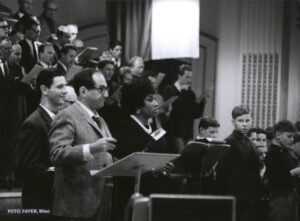
Culshaw recalled: “We had just finished the Card Trio in Act 3 with Leontyne and the two other gipsy girls in splendid voice, while Karajan’s accompaniment had been an education in itself. On paper, there is almost nothing worth mentioning – just a series of slow, equally spaced string chords […]. It was evidence of Karajan’s genius or magic or whatever we care to call it that he took enormous pains with these simple chords in order to get just the right degree of string tone with an appropriately dark colour.”

It was obvious that Karajan intended to cast Leontyne Price for his 1966 stage production of “Carmen” in Salzburg but Price was cast as the main part in the grand opening of the new Metropolitan Opera in New York and therefore unavailable. The young Grace Bumbry got her chance and also appeared in the film in the following year. Karajan and Price in a motion picture – that happened in one of Henri-Georges Clouzot’s famous concert films, the one with the Verdi Requiem at La Scala in 1967. Between 1968 and 1976, there was an interval in Karajan’s and Price’s collaboration.
They met again for a single performance of Brahms’ “German Requiem” in New York and in 1977 they revitalised their “Trovatore” at the Salzburg Easter Festival and for Karajan’s historic and “hysteric” (© Glenn Gould on Horowitz) return to the Vienna State Opera. “Leontyne Price was once again the Leonora, the voice now cosseted by Karajan as never before. (Richard Osborne)” The performances with Luciano Pavarotti were recorded live.
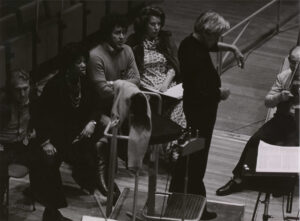
Karajan and Price also went into the studio the same autumn and recorded the opera again – this time with Franco Bonisolli, a tenor who literally threw a sword in Karajan’s direction at a rehearsal the following April in Vienna. Price wasn’t in the cast of these “Trovatore” performances, so the studio recording remained their last professional encounter.
“Working with Karajan is like a space flight.”
Leontyne Price
We’ve prepared playlists with Karajan and Leontyne Price. Listen to them here.
— P.R. JenkinsRichard Osborne: “Karajan. A Life in Music” Chatto & Windus, London. 1998
“Conversations with Karajan” Edited with an Instroduction by Richard Osborne. Oxford University Press. 1989
Ernst Haeusserman: “Herbert von Karajan. Eine Biographie.” Verlag Fritz Molden, Wien-München-Zürich-Innsbruck. 1978
Interview with Alan Blyth in Gramophone, August 1971
Alan Blyth in Gramophone, 6 February 2017
